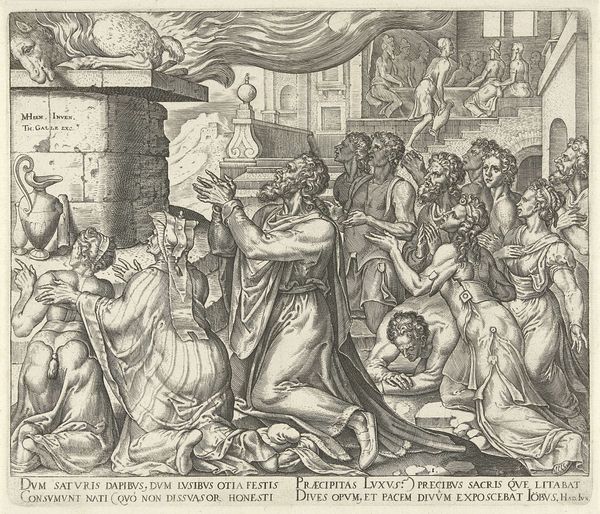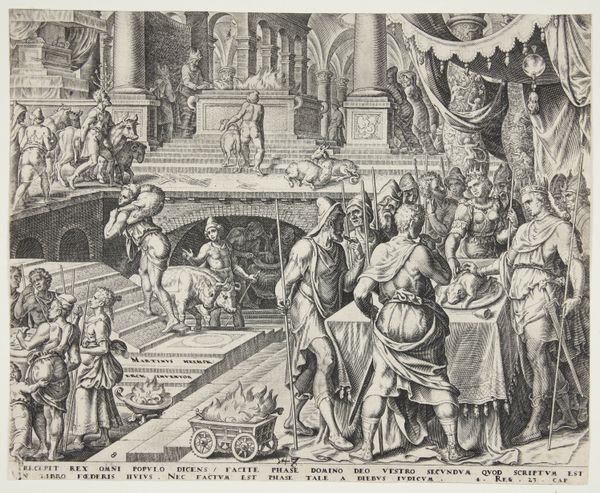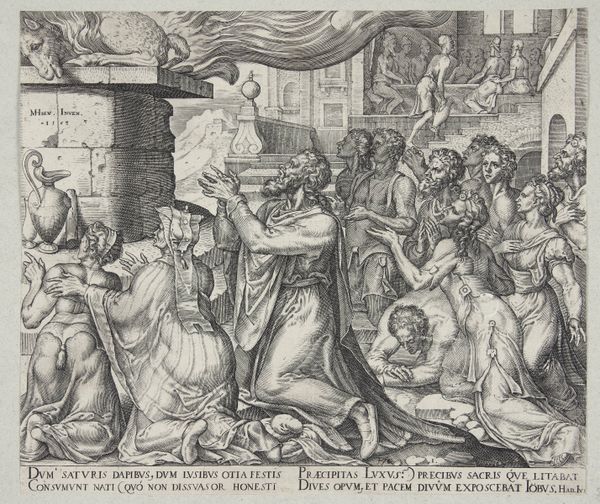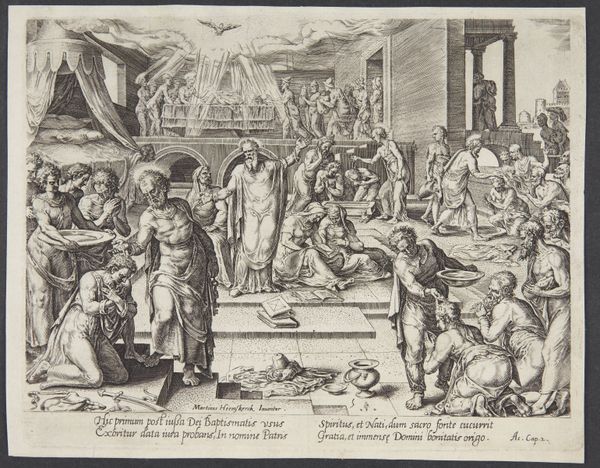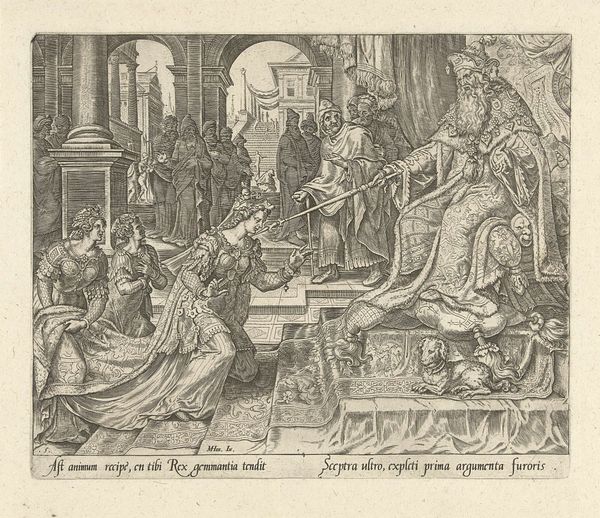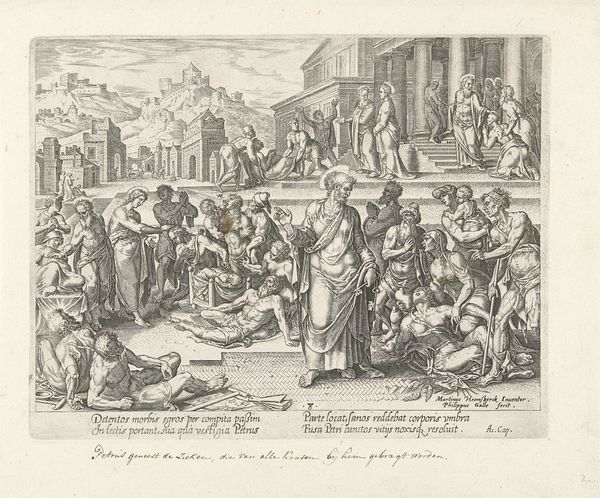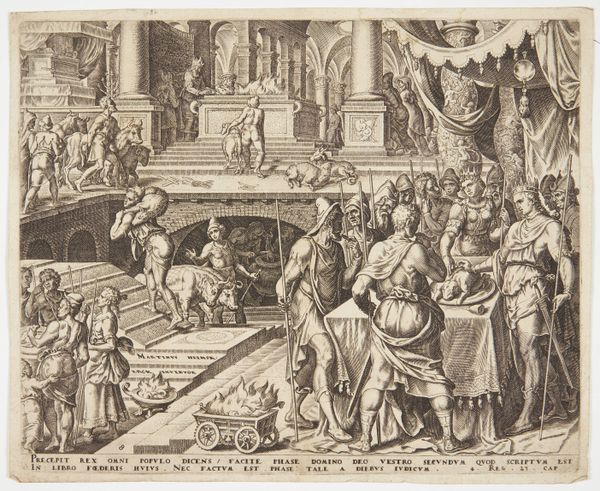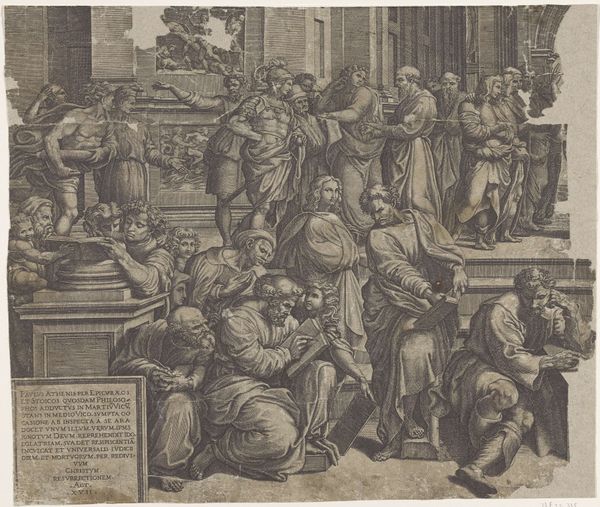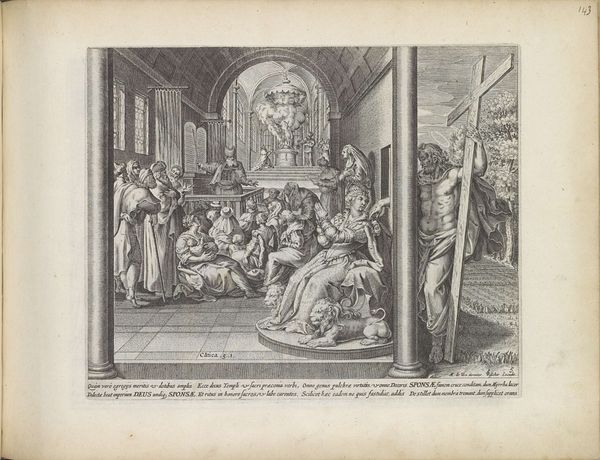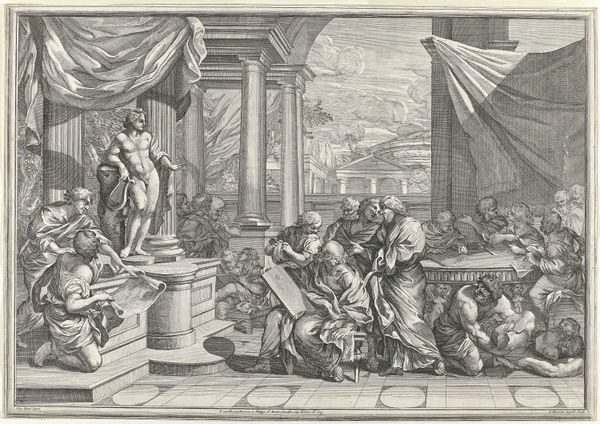
print, etching
# print
#
etching
#
mannerism
#
genre-painting
#
history-painting
Dimensions: height 207 mm, width 253 mm
Copyright: Rijks Museum: Open Domain
Editor: We're looking at "Geef ons vandaag het brood dat wij nodig hebben," or "Give us this day our daily bread," a print etched by Wierix between 1569 and 1573. It's packed with figures. I’m curious about all these details of daily life portrayed alongside what seems to be a church service. What do you see in this piece? Curator: I see a complex material and social landscape. Notice how the etching process itself, the precise labor involved in its creation and replication, allows for a widespread distribution of this particular imagery. It brings what might be considered high religious art down to a more accessible level, circulating through society as a commodity. Editor: So, it's not just about the religious scene depicted, but also how that scene becomes available? Curator: Precisely. Think about the raw materials involved – the copper plate, the ink, the paper. Then consider the skills, tools, and studio environment necessary for Wierix to produce this image. And most importantly, where were these prints consumed and by whom? This seemingly devout image enters into networks of trade and exchange. Look at how the material conditions of poverty are presented in this image - how the materiality of the scene itself interacts with the commercial reality of the print as an object. Does this change your reading of it? Editor: It definitely does. I was focused on the implied narrative of the religious ceremony, but the print itself has a story in the means of production, how it becomes accessible through the market to possibly these same poor people. Thanks for that different perspective. Curator: Of course. It reveals the complex relationships between artistic production, religious iconography, and the socioeconomic realities of the time. These weren't separate spheres.
Comments
No comments
Be the first to comment and join the conversation on the ultimate creative platform.
